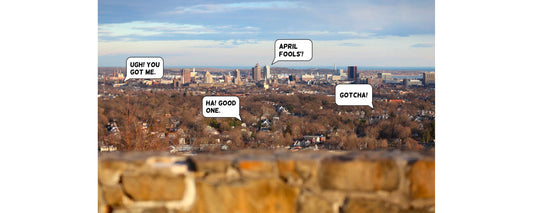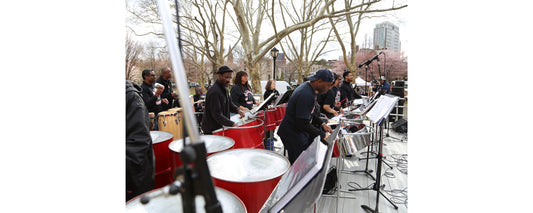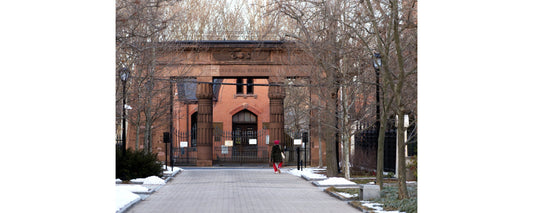Hidden below the entry lanes that become the Pearl Harbor Memorial Bridge—a.k.a. the Q—a tiny park memorializes the 18 Connecticut men who died in the surprise Japanese attack on that Hawaiian military base exactly 80 years ago today.
Dedicated in December 2018, Pearl Harbor Memorial Park isn’t exactly off the beaten track, but neither is it very accessible. If you’re coming from the east side of town, you’ll need to cross the Route 1 bridge instead of the Q to find it. From downtown, Water Street will take you there.
sponsor message
One of the park’s purposes is to offer a view of the bridge, which was completed in 2015. But better ones exist, including from the Canal Dock Boathouse and Criscuolo Park. A large millstone (oddly referred to on park signage as a “viewing platform”) only raises your vantage point a foot or so.
Nonetheless, the park offers thoughtful symbolic elements and a list of the names of the Pearl Harbor fallen, including Army Air Force Private George Smith of New Haven, who died at Hickam Field. The airfield, adjacent to the harbor, was also hit hard in the attack. B-17 bomber planes on the ground and several other buildings at the base, including hangars and barracks, were bombed. 35 men were killed in the mess hall alone, according to a National Park Service website. While several New Haveners were present for the shocking attack that forced America’s entry into World War II, only Smith lost his life in the battle. Most of Connecticut’s Pearl Harbor casualties—including Edward W. Gosselin of Hamden—were stationed on the prime targets: American battleships at anchor.
A plaque listing every man’s rank, name, service unit, station at Pearl Harbor and hometown is posted beside the memorial itself, a 13-ton cement structure with gilded lettering that spells out the bridge’s name. An oval island holding the park’s flagpole is said to mirror the footprint of the bridge’s massive lower pillars, or “anchor piers,” and if you stand at the right angle, you’ll see that the pathway itself forms a Q with a stylized tail like that of the bridge’s logo—a nod to the bridge’s colloquial name, which is short for Quinnipiac Bridge.
Set in two arcs around the flagpole are simple cubes of granite intended for seating. But Pearl Harbor Memorial Park isn’t the most contemplative spot. Traffic whizzes by on Route 1, here called Water Street. A truck’s air horn honks on the overpass above. A slow freight train rumbles along rusty tracks toward the port, its cars edged with graffiti. To visit the park, you’ll have to leave your car somewhere on East Street and walk under the overpasses, along the edge of a forest of concrete pylons. Or ride your bike—there’s a bike rack near the main park sign.
Under a gray flannel sky, with a cold wind snapping the park’s American flag, I stood for a moment and tried to think of those 18 Connecticut men—some of them still really boys, no doubt—who died more than 77 years ago. Perhaps it was easier to reflect on them back in June 2012, when a ceremony marked the opening of the bridge’s northbound lanes and more than 300 guests gathered in their memory, including four of the state’s then six Pearl Harbor survivors. Perhaps it was easier in December 2018, when the state’s last Pearl Harbor veteran, nonagenarian Floyd Welch, laid a wreath at the park with the help of Governor Dannel Malloy. Or perhaps it’s just as fitting to stand alone at the stony park considering those names while the postwar world grinds on around you.
There aren’t many places in New Haven to do so, as far as World War II is concerned. New Haven Veterans Memorial Coliseum was designed to play that role, but it was hardly seen as a war memorial, and it was demolished in 2007. A neighborhood monument to the war dead remains in Wooster Square Park, restored by residents in 1990. Another in the small traffic island at State, Mechanic and Lawrence Streets went missing, perhaps as early as the 1950s, according to a 2013 article in the New Haven Register, and was never found. According to the Pearl Harbor park sign that overlooks the bridge, that structure was named not only to remember those lost at Pearl Harbor but also “to honor those who were in the U.S. armed forces during World War II.”
But Pearl Harbor Memorial Bridge isn’t only looking back. It was and may still be “the first extradosed bridge in America and the widest of its type in the world,” according to a video by the American Society of Civil Engineers. In layman’s terms, the bridge is a hybrid of cable and girder supports, “allowing shallower cable angles and lower tower heights while accommodating a center span length of approximately 500 feet.” In another symbolic detail, the towers themselves were designed to evoke the smokestacks of a battleship.
No doubt there are New Haveners who were alive on December 7, 1941, and remember it well. Pearl Harbor Memorial Park asks the rest of us to try to remember it, too.
Pearl Harbor Memorial Park
Water St and East St, New Haven (map)
Written by Kathy Leonard Czepiel. Images 1 and 2 photographed by Kathy Leonard Czepiel. Images 3 and 4 photographed by Dan Mims. This lightly updated story was originally published on June 5, 2019.








